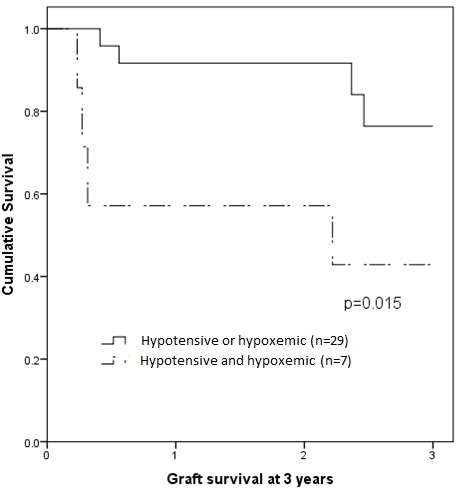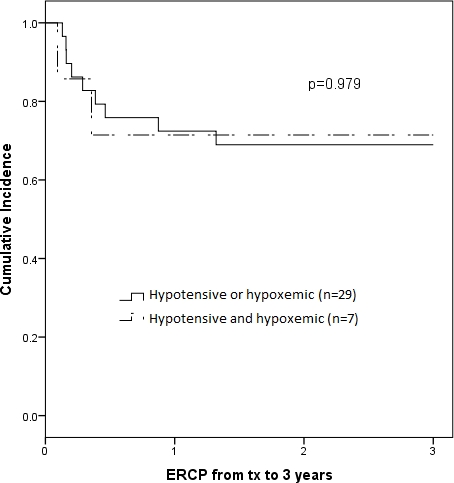Donor Hemodynamic Profile Presages Graft Survival in Donation After Cardiac Death Liver Transplantation
Transplant Institute, Georgetown University Hospital, Washington, DC.
Meeting: 2015 American Transplant Congress
Abstract number: C126
Keywords: Donors, Graft survival, Liver transplantation, non-heart-beating, Survival
Session Information
Session Name: Poster Session C: Liver Donation and Allocation
Session Type: Poster Session
Date: Monday, May 4, 2015
Session Time: 5:30pm-6:30pm
 Presentation Time: 5:30pm-6:30pm
Presentation Time: 5:30pm-6:30pm
Location: Exhibit Hall E
Introduction
Donation after cardiac death (DCD) grafts are prone to periods of prolonged hypoxemia and hypotension prior to donor expiration, leading to an increased complication rate, including biliary lesions (BL). Oxygenation and blood pressure influence organ quality, therefore we analyzed the donor's hemodynamic profile during the time from extubation to asystole (ETA, max 20 minutes).
Patients and methods
Retrospective chart review of DCD LTs performed at a single institution from January 2008 to December 2013. Patient and graft survival and biliary complications were compared stratifying patients using 2 variables: duration of hypoxemia (SpO2 <80%, gr. O) and hypotension (MAP <50mmHg, gr. T) during ETA. Analysis was conducted for hypoxemia, hypotension and combining both, lasting for either ≤50% or >50% of ETA.
Results
Thirty-six patients underwent DCD LT (Maastricht category III). Of these, 11 (30.6%) underwent biliary investigations at least once, most frequently for anastomotic stricture (5, 45.4%). Neither O or T alone predicted BL, hospital stay, patient or graft survival, whereas 1 and 3 year graft survival was significantly lower for grafts that experienced O and T contemporarily for >50% of ETA compared to grafts that experienced O or T alone (57.1% vs 93.1%, p=0.009 and 42.9% and 85.7%, p= 0.015, respectively).  Incidence of BL and hospital stay was not statistically different between groups.
Incidence of BL and hospital stay was not statistically different between groups. 
Conclusion
Positive outcomes with DCD donors are obtainable with careful selection of grafts, avoiding extended periods of both hypoxemia and hypotension during ETA. Better analysis of ETA profiles is needed to help select high and low risk profiles.
To cite this abstract in AMA style:
Ertreo M, Desai C, Girlanda R, Frias T, Fishbein T. Donor Hemodynamic Profile Presages Graft Survival in Donation After Cardiac Death Liver Transplantation [abstract]. Am J Transplant. 2015; 15 (suppl 3). https://atcmeetingabstracts.com/abstract/donor-hemodynamic-profile-presages-graft-survival-in-donation-after-cardiac-death-liver-transplantation/. Accessed January 7, 2026.« Back to 2015 American Transplant Congress
